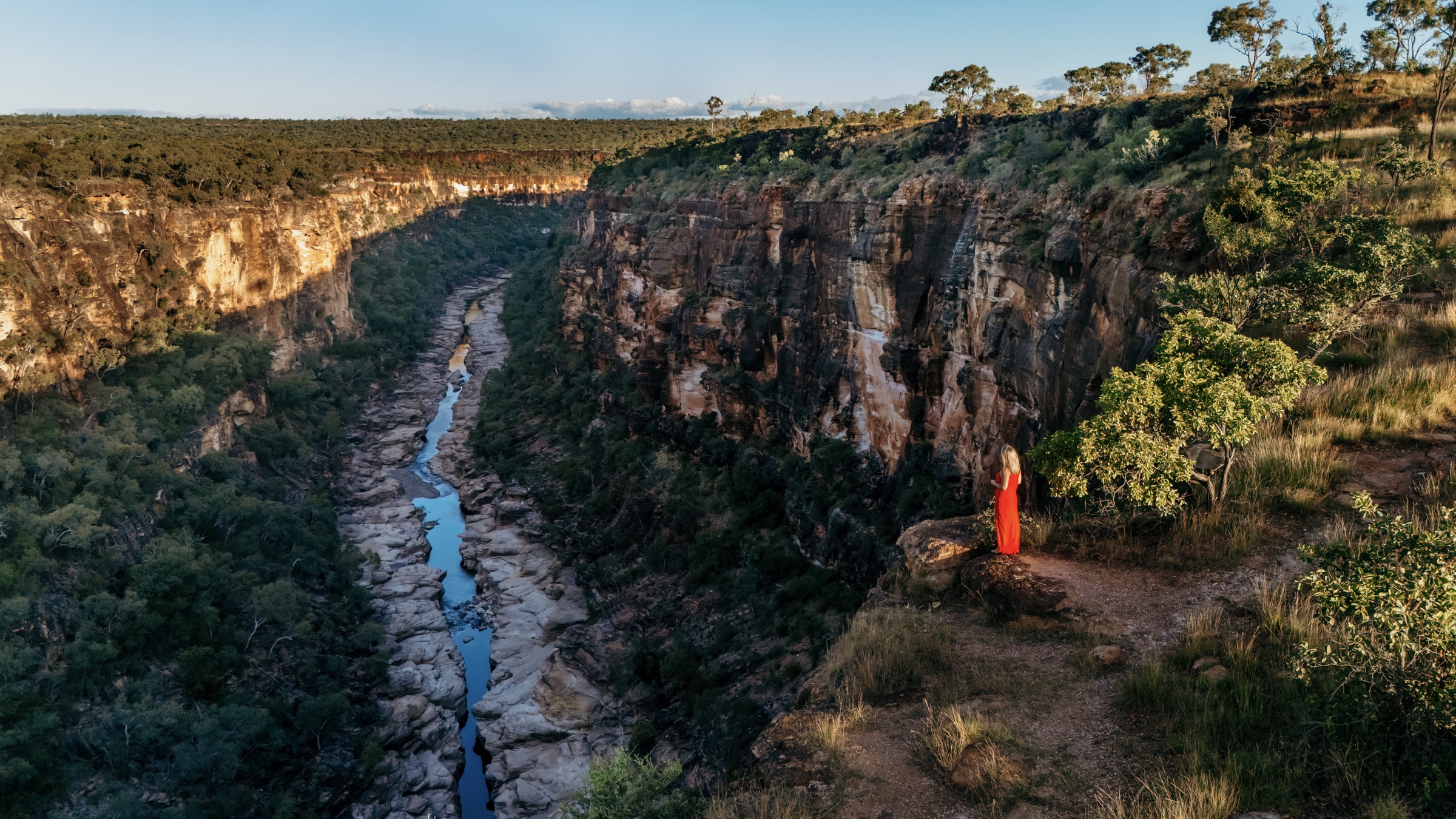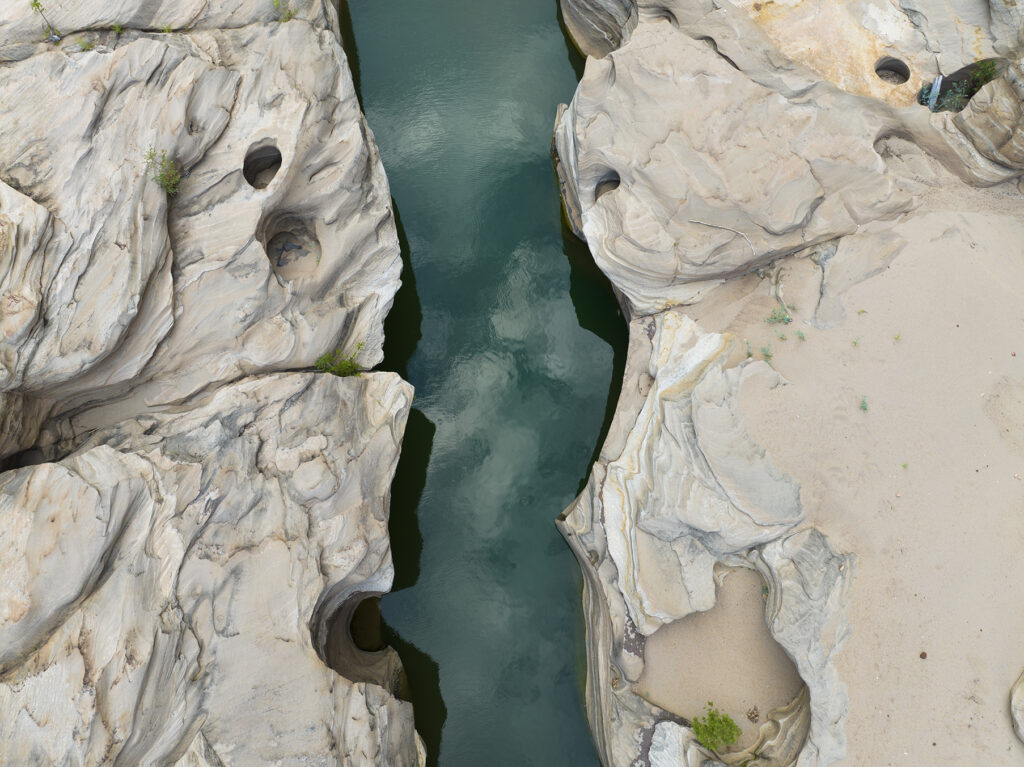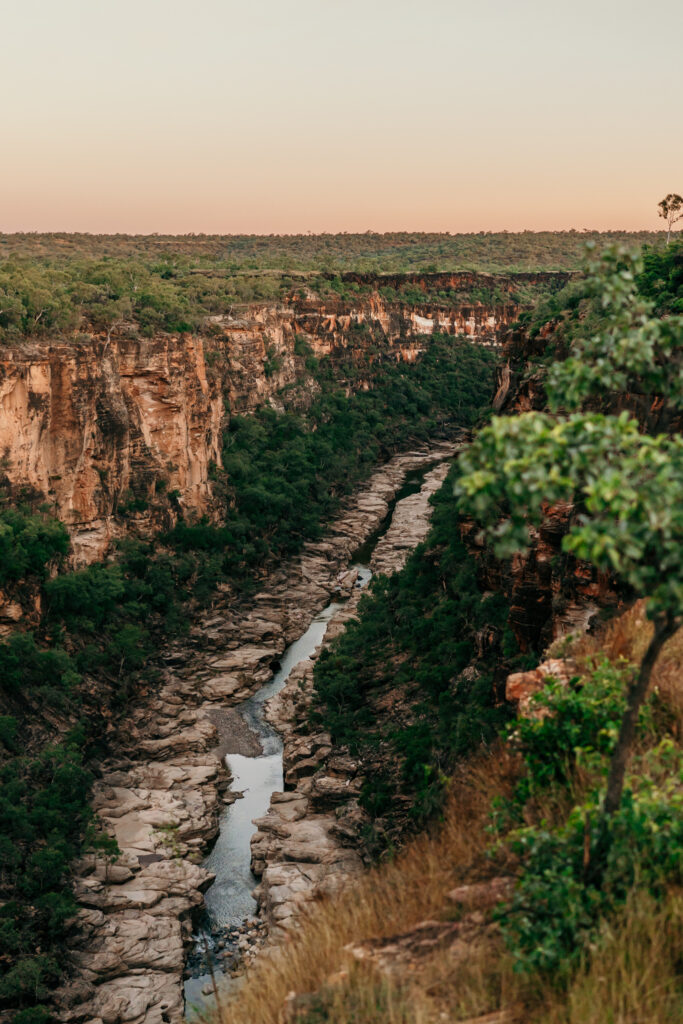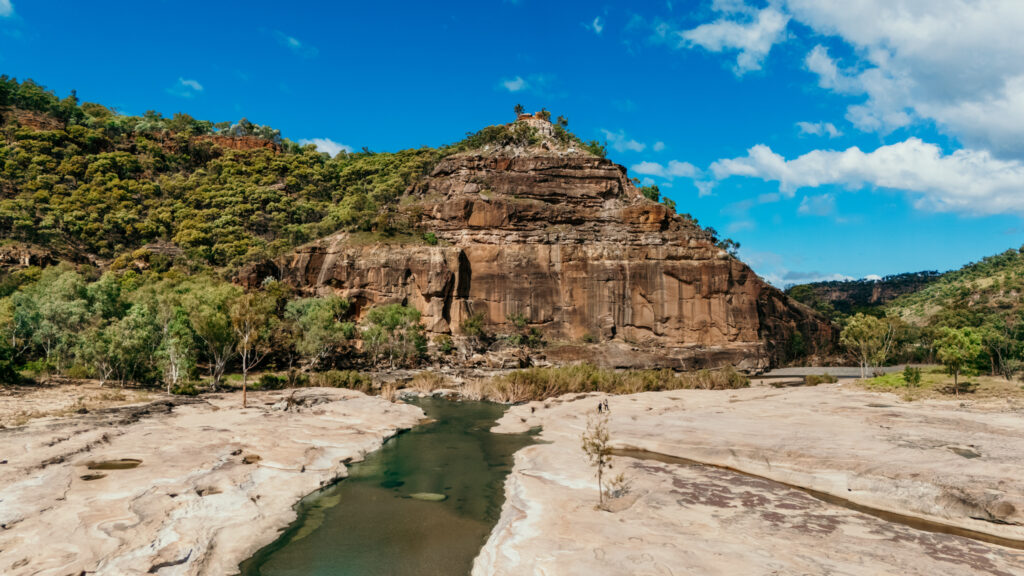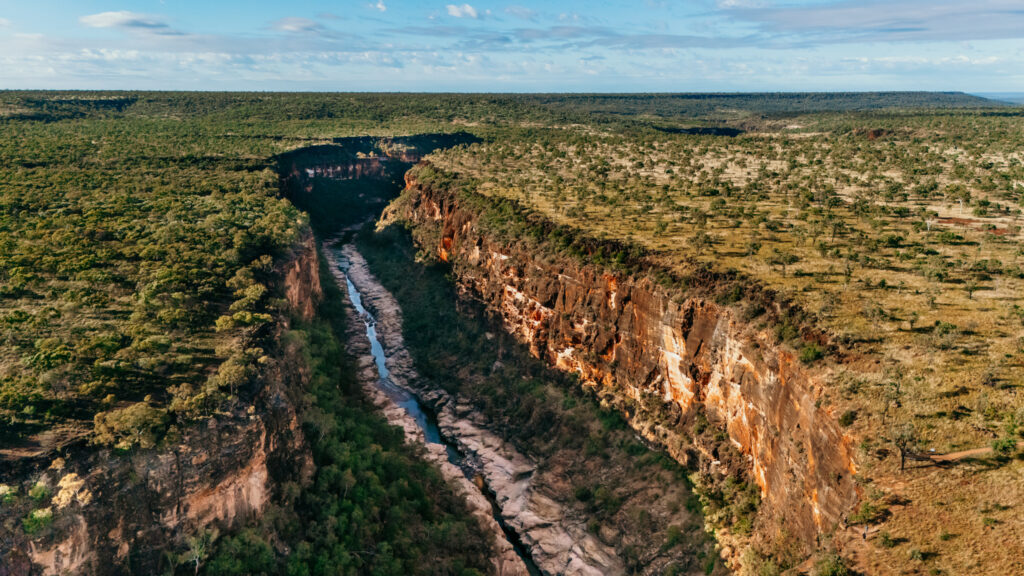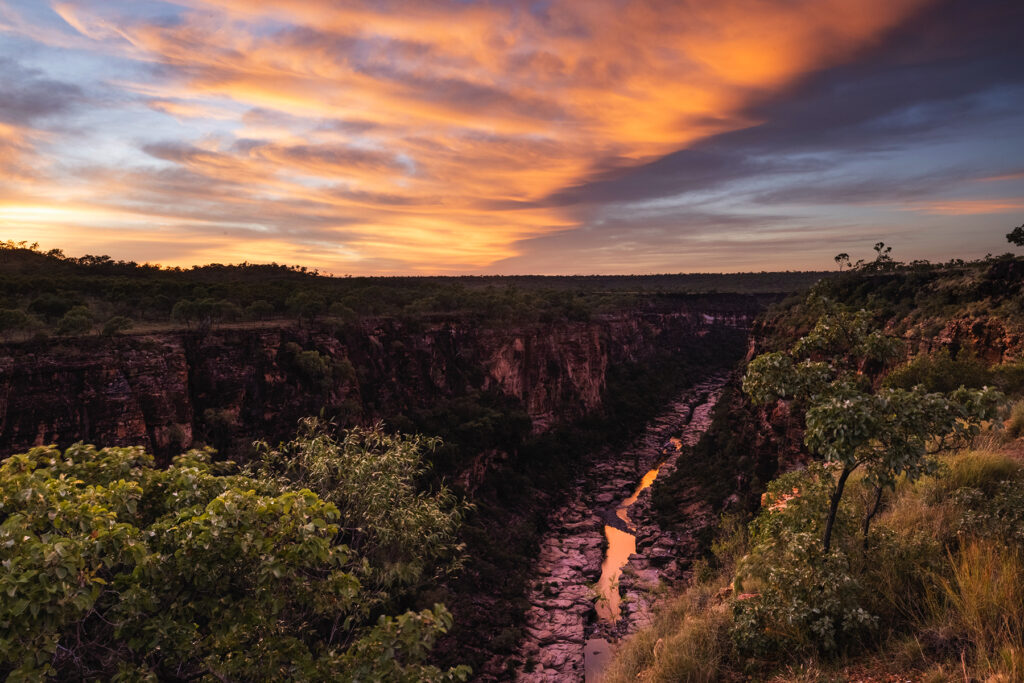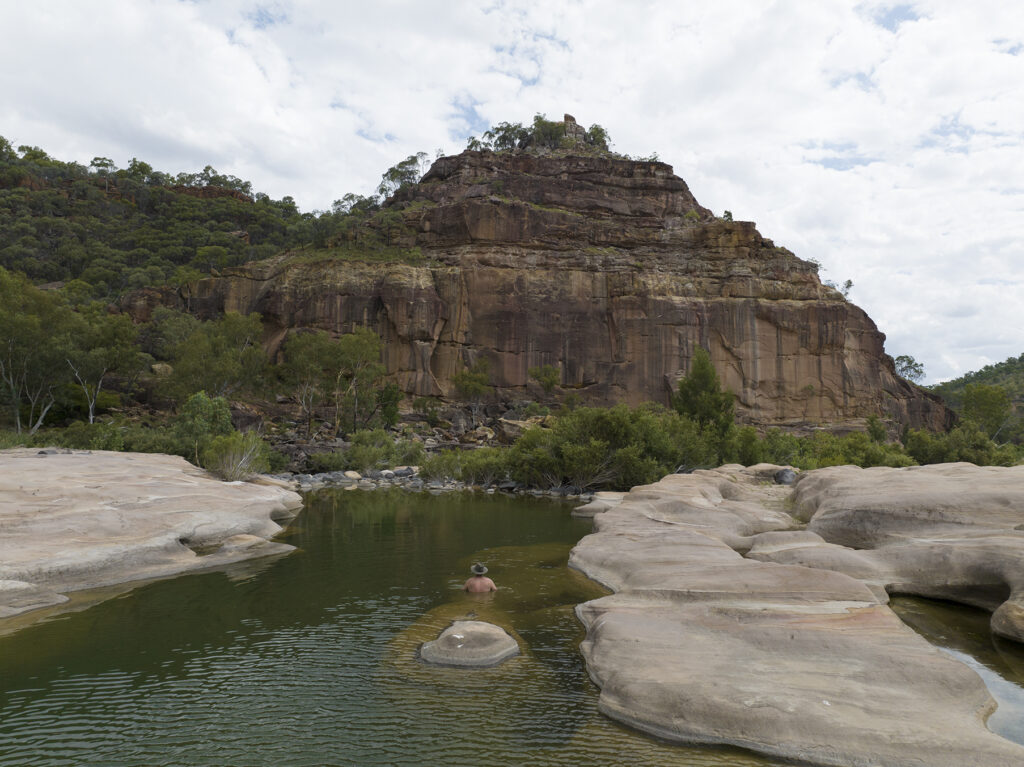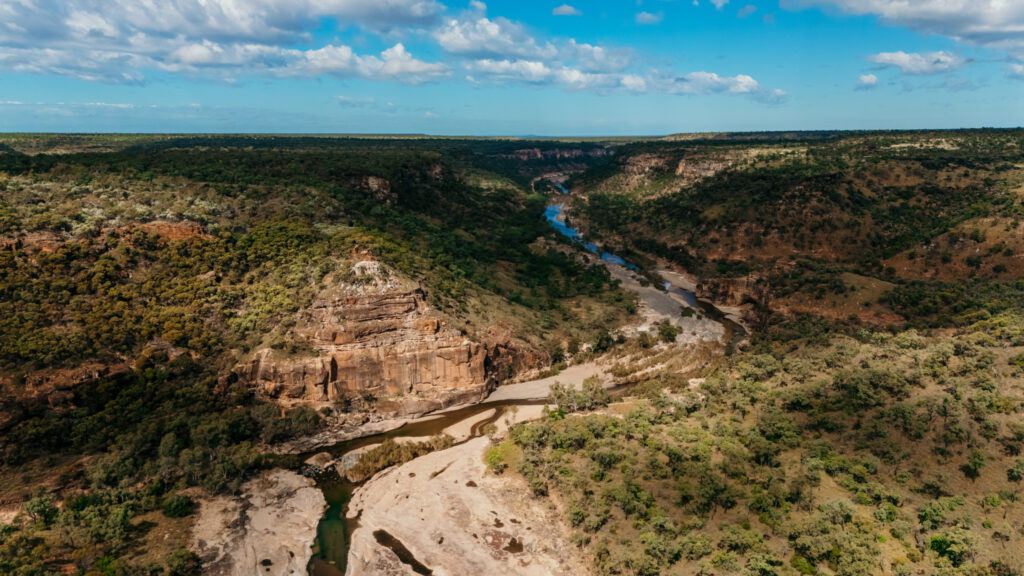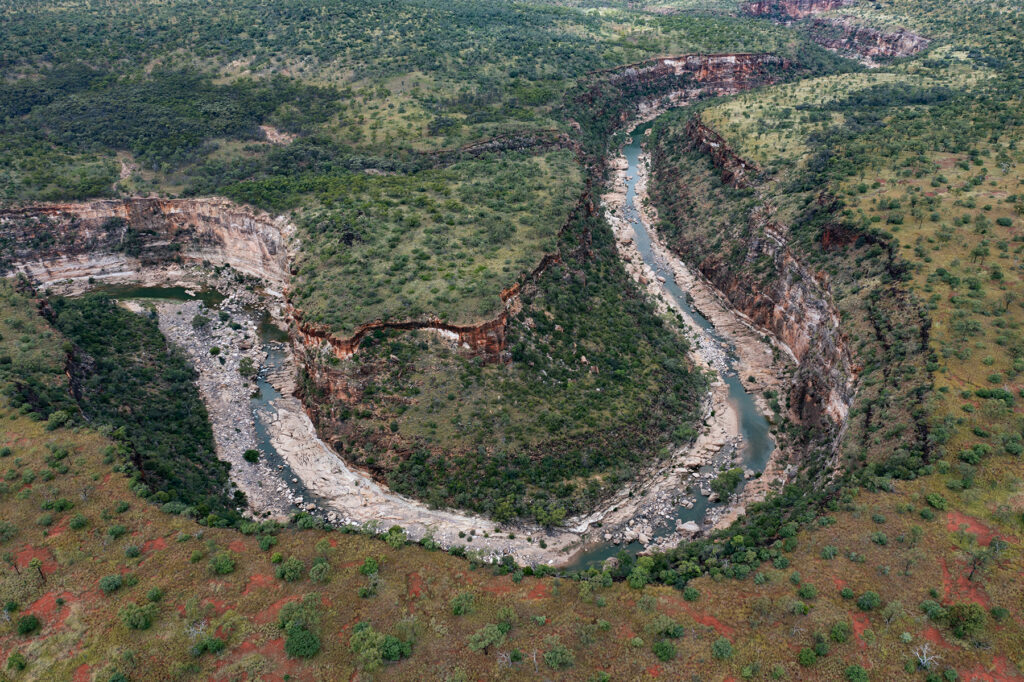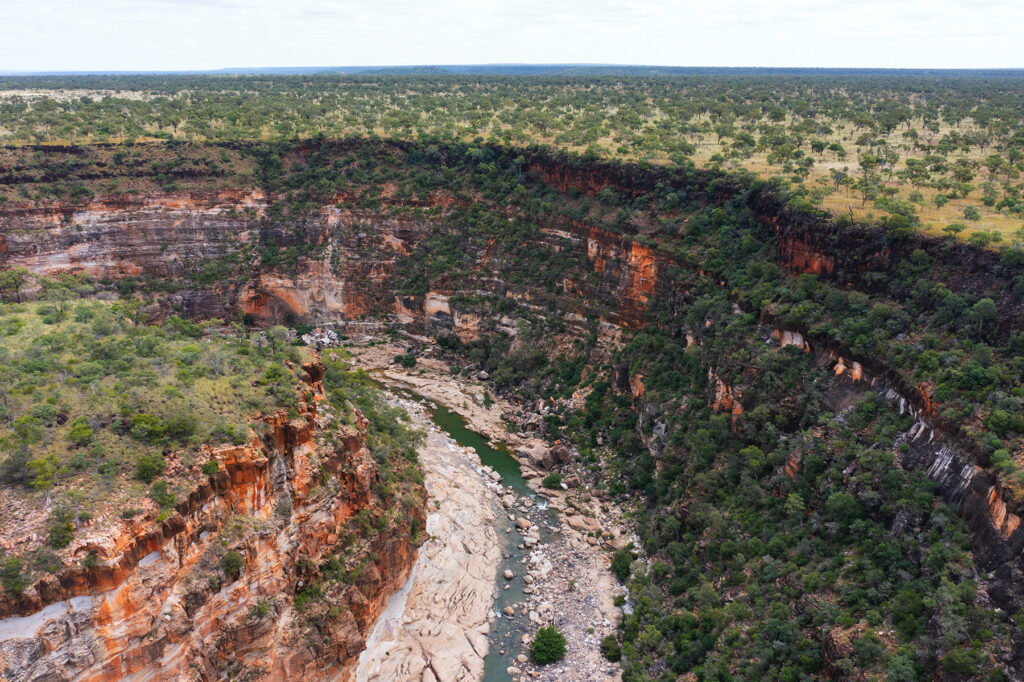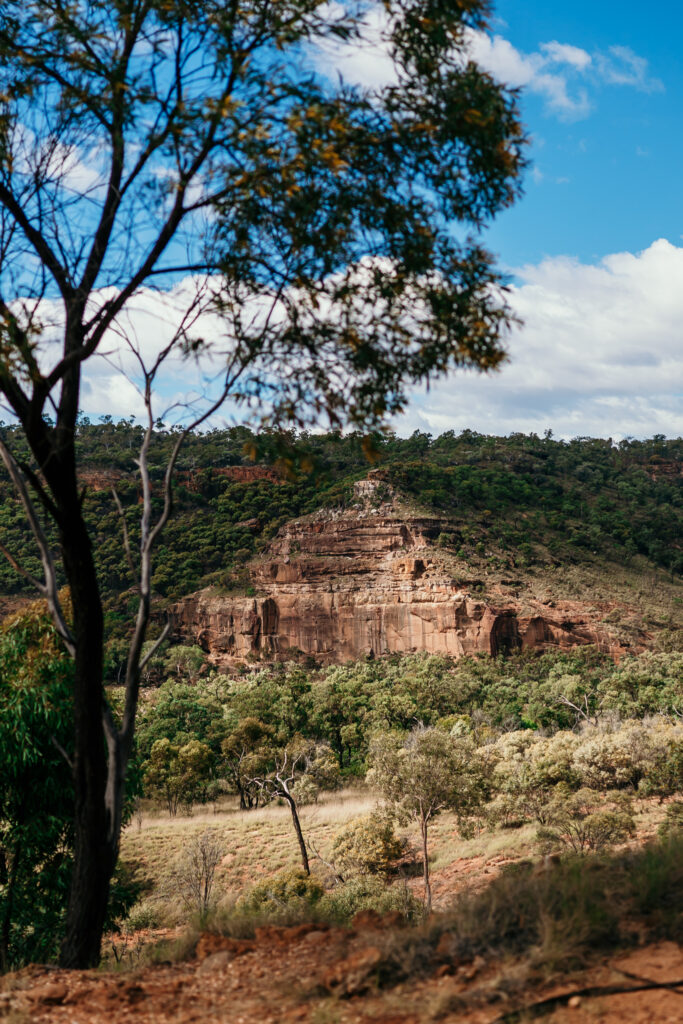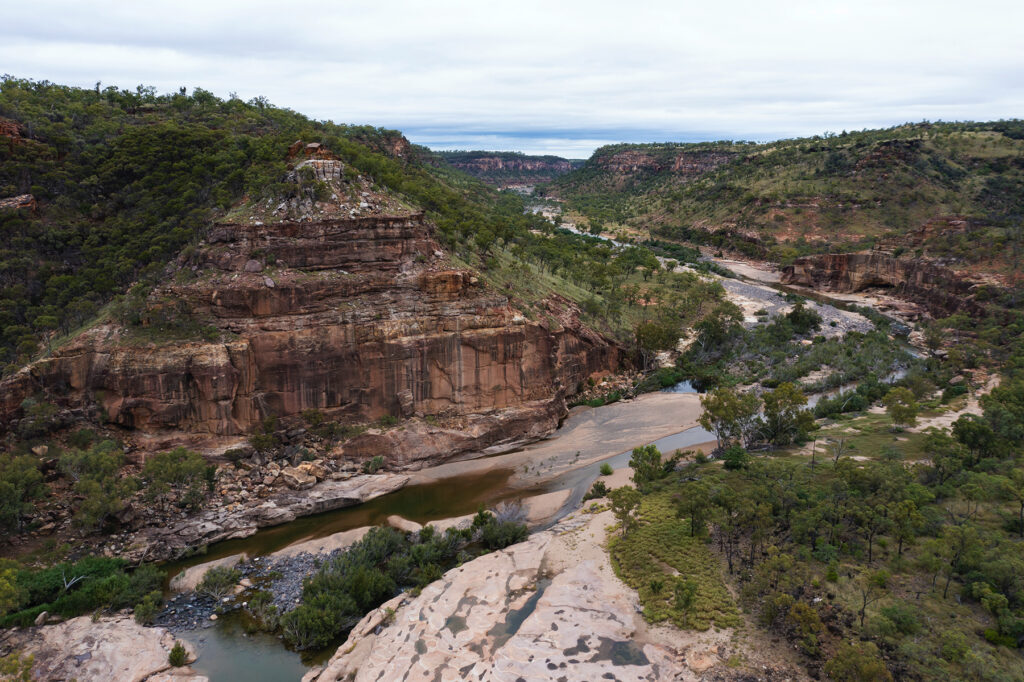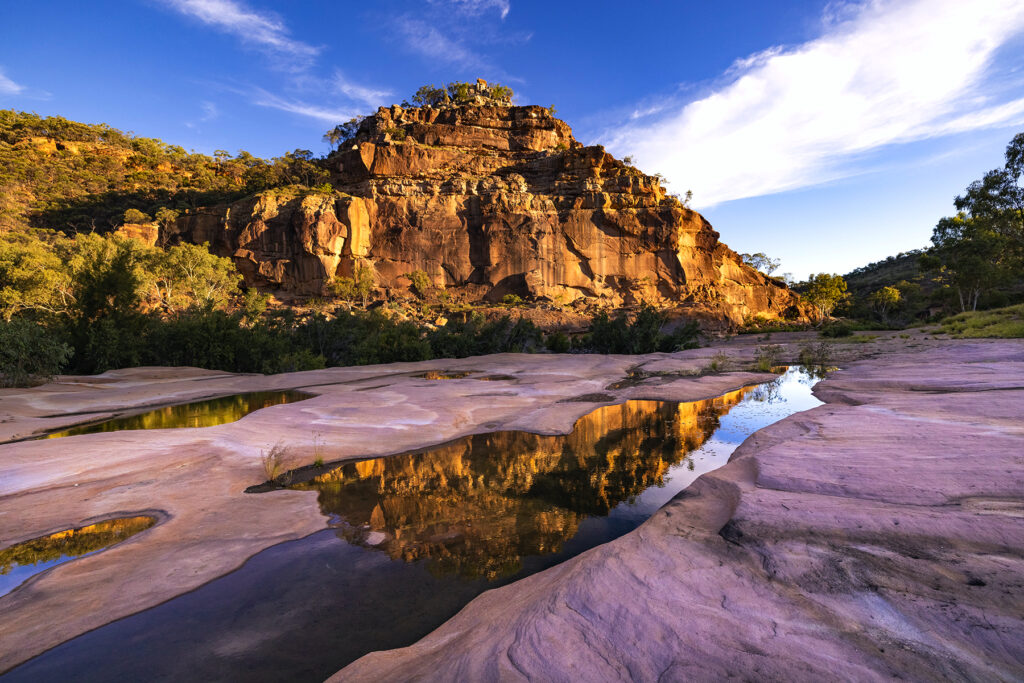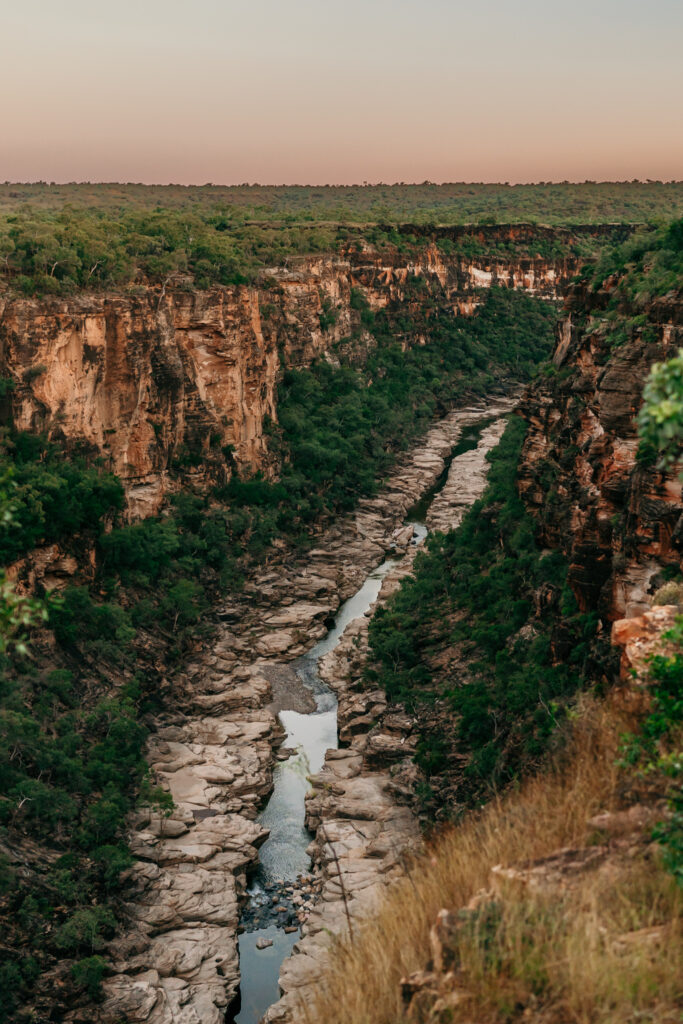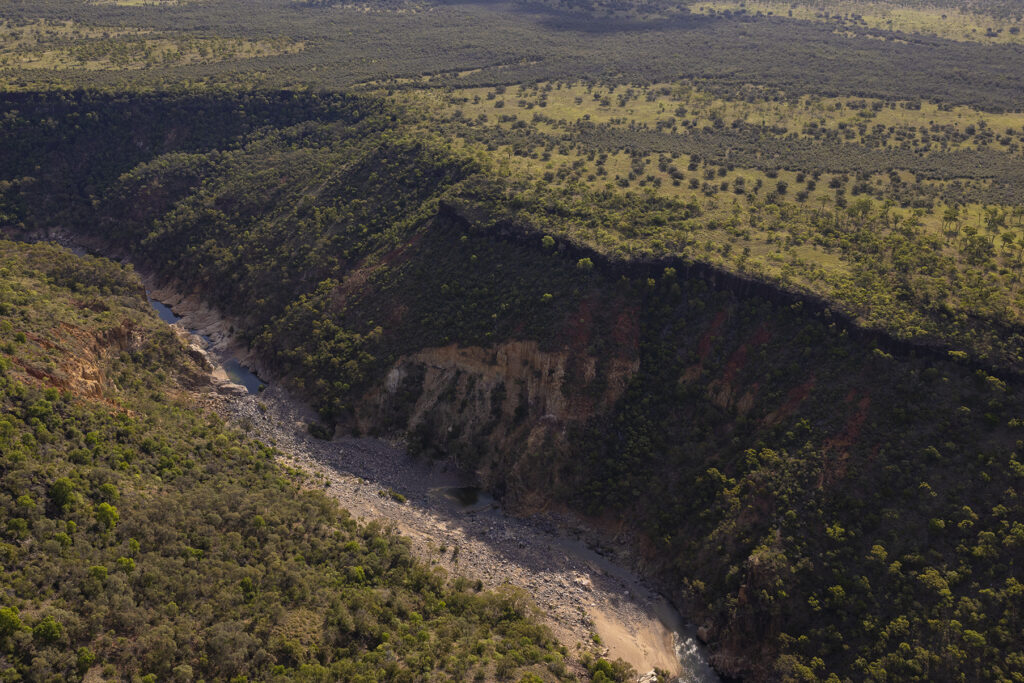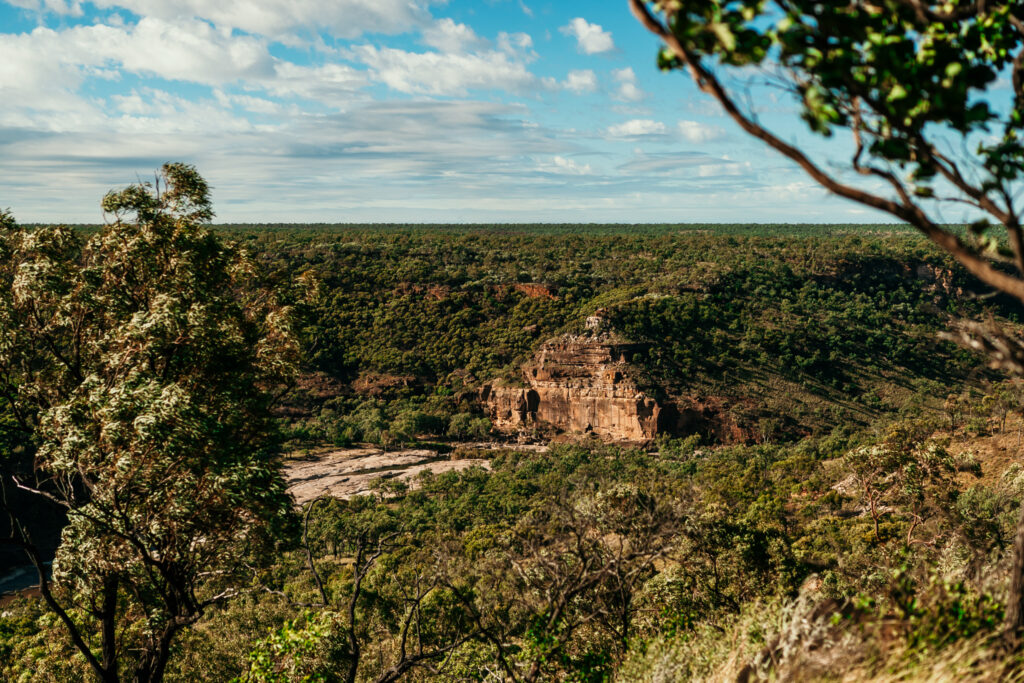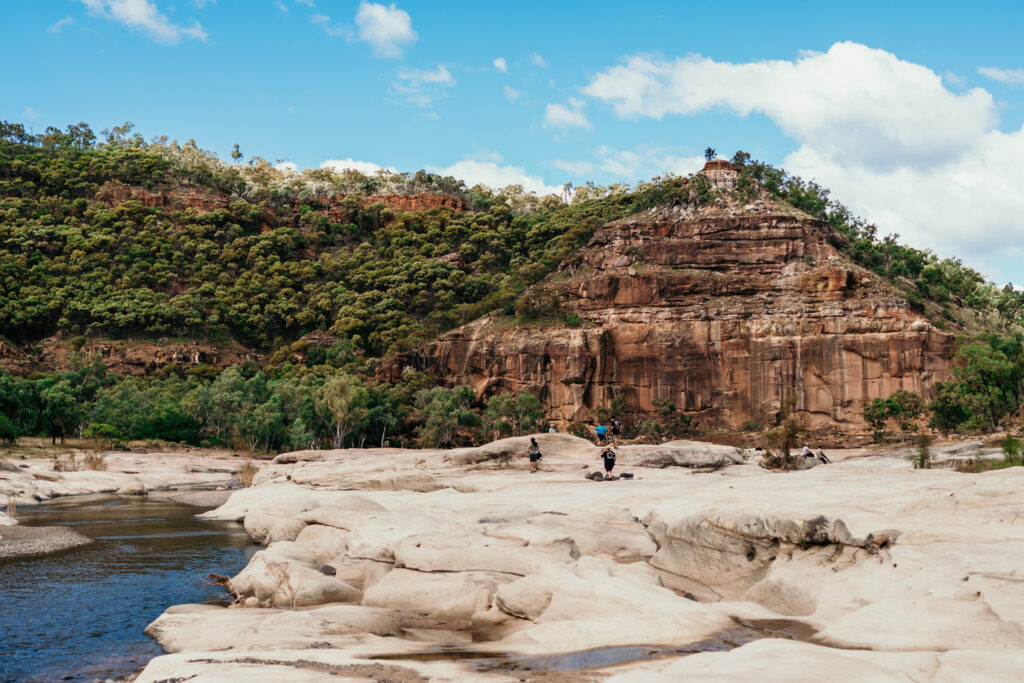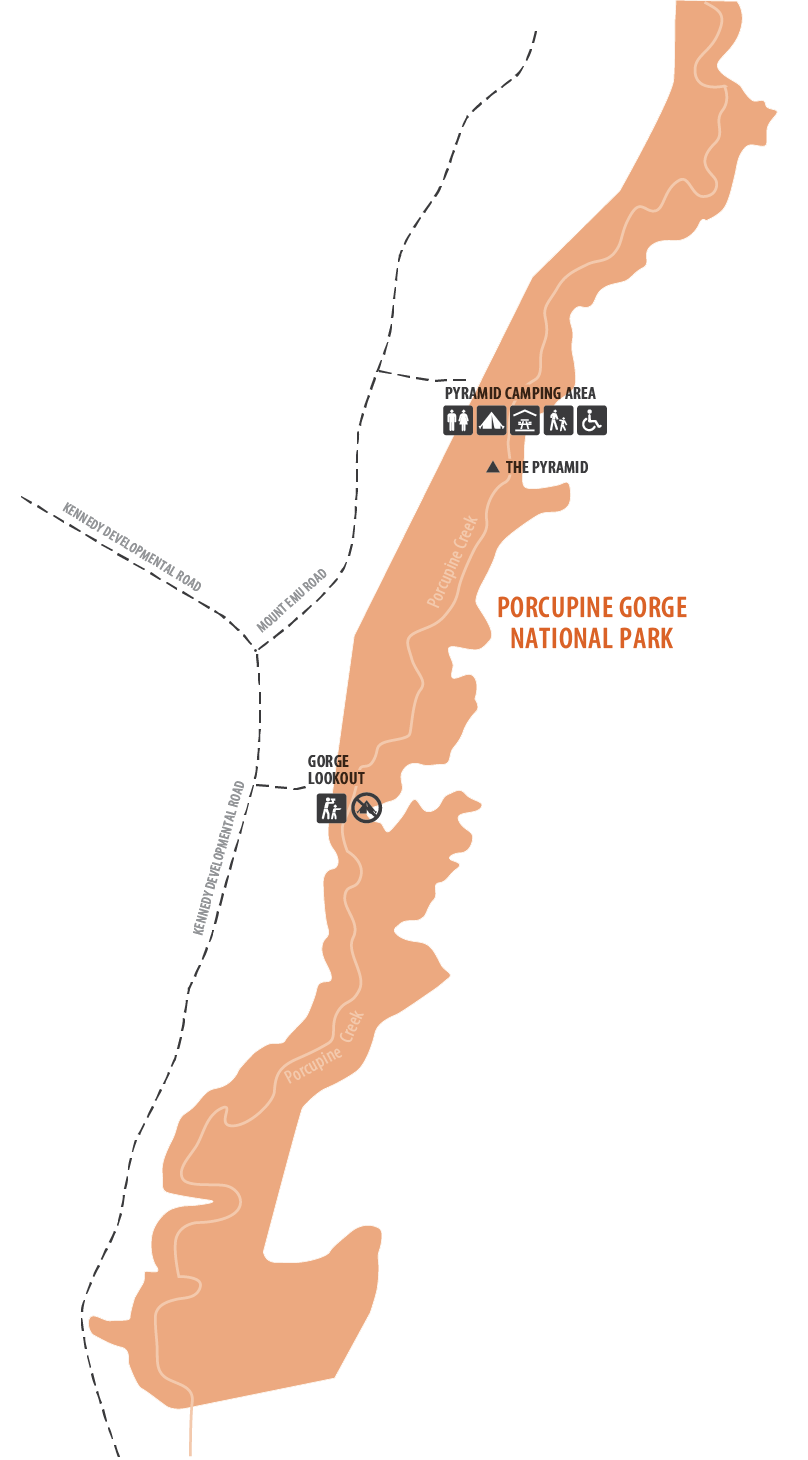
The road passes through the flat woodlands of typical Australian eucalypts and acacias and gives no hint of the existence of the gorge until the edge is reached. The gorge has been carved over time revealing layers of basalt and coloured sandstones, creating the beautiful soft colours of the cliff walls that tower over the creek below.
The Gorge can be appreciated from two distinct areas. The first point is a lookout giving a view deep into the Gorge below. There is no access to the base of the Gorge from this point. The second is the Pyramid Camping Area within the National Park. From here a walking track takes visitors to the base of the Gorge where the Pyramid formation is a prominent feature. Intermittent water holes line the base of the Gorge, a perfect place for a cool swim. Camping sites can be either booked online or by phone through Queensland National Parks or at the Flinders Discovery Centre.
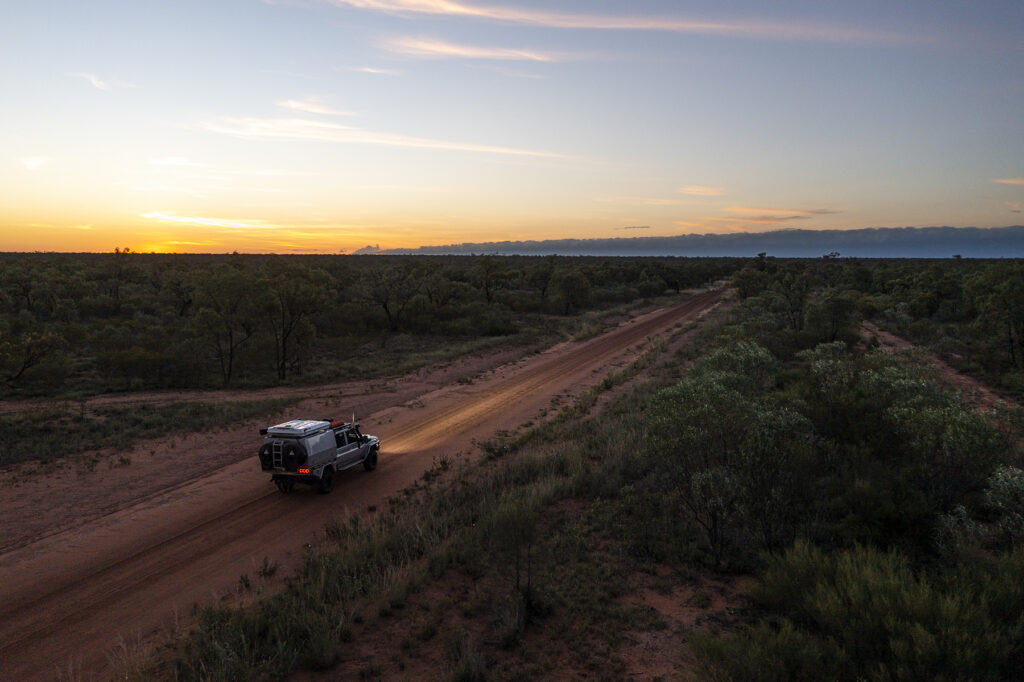
Getting there
The Kennedy Development road to Porcupine Gorge is fully sealed. The Gorge Lookout is 63km north of Hughenden and the Pyramid Lookout, campground, Rim Walk and Gorge Walk are another 11km further north. This road could have cattle, wildlife and road trains. Please check road conditions at the Flinders Discovery Centre before travelling to Porcupine Gorge.
Park features
Covering an area of 5410ha, Porcupine Gorge National Park extends for more than 25km along Porcupine Creek, and includes surrounding open woodland and grassland. The creek has carved an impressive canyon, which reveals strata of sedimentary rocks spanning hundreds of millions of years.
In the wider section of the gorge, the eroding action of the creek has also created the Pyramid, an isolated monolith of multicolored sandstone rising from the floor of the gorge, shaped as its name suggests.
Porcupine Gorge National Park and the surrounding area are a rich cultural landscape, with three traditional Aboriginal groups (the Gutjal, Jirandali and Mitjumba) continuing to maintain traditional connections to country within the park.
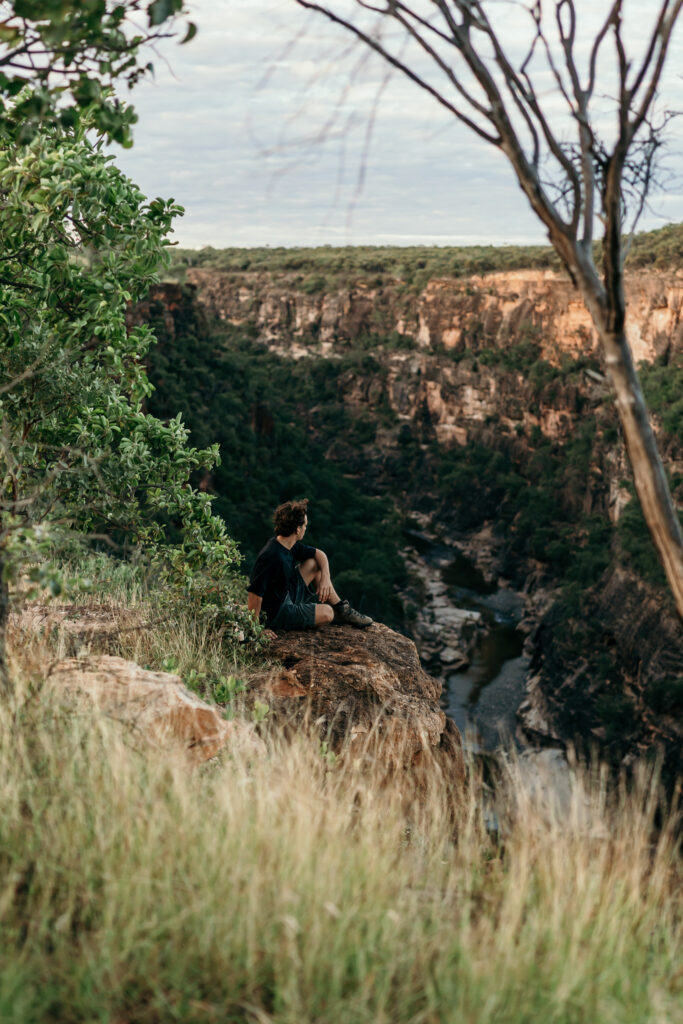
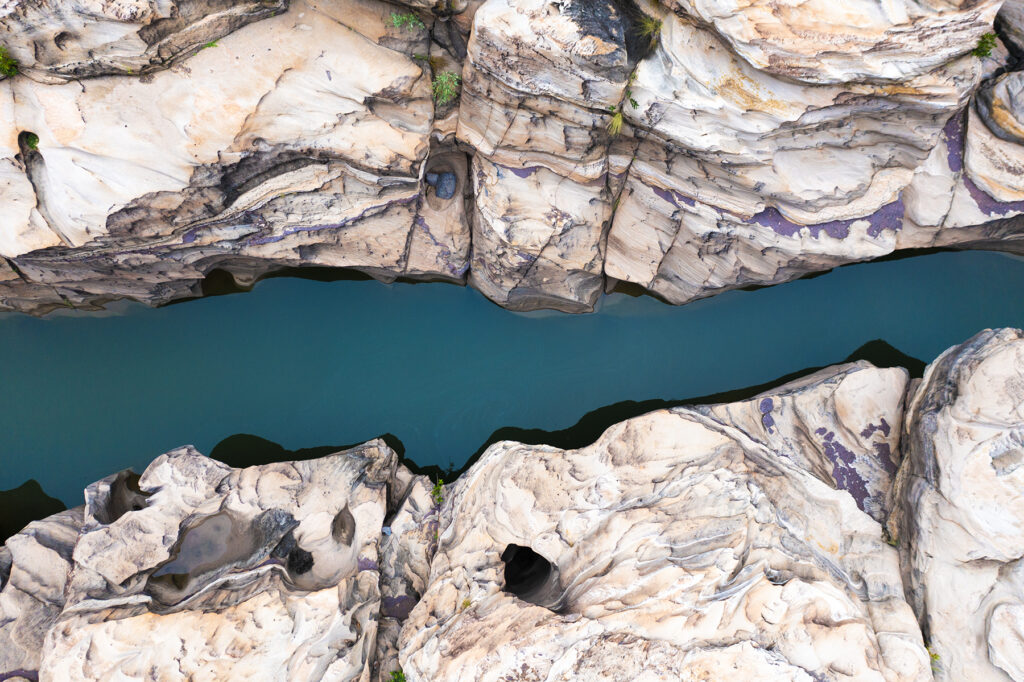
Natural Environment
Porcupine Gorge National Park is a unique area of the savanna plains with a dramatic sandstone gorge cut deep into its interior. A thin, hard, basalt cap, the product of geologically recent lava flows, has in most places protected the older underlying rock, but where this capping has been worn away, the scouring action of waterborne particles has excavated a deep chasm into the softer sandstone. The “excavator” is Porcupine Creek, a meandering string of clear pools in winter and a boiling cascade in the wet season.
In the wider section of the gorge, the eroding action of the creek has also created the Pyramid, an isolated monolith of multicolored sandstone rising from the floor of the gorge, shaped as its name suggests.
Plants and animals
Wind and water have coloured and sculptured the sandstone to form fluted channels, boulders, potholes and shallow caves. Permanent deep pools, each with its resident turtles, are lined with casuarinas (sheoaks) and melaleucas (paperbacks), while various eucalypts and acacias, including the rare pink gidgee, grow in precarious positions on the cliffs above.
The gorge is filled with the calls of currawongs, parrots and the occasional soaring bird of prey. Closer observation reveals a wide variety of birds including the black duck, red-winged parrot, black bittern and numerous honeyeaters.
The gorge becomes a focal point for many animals in the dry season while others, such as the wallaroo and rock wallaby, are permanent residents.
Camping
Camping at Porcupine Gorge National Park
Camping is available at the Pyramid campground, 74km north of Hughenden. Camping permits are required and fees apply. Campers should bring their own drinking water, as the water supply is unreliable.
The camping area is remote with limited facilities and no mobile phone coverage, so campers must be self-sufficent. The camping area has 22 sites in total and is often busy in the months or June and July so book ahead to avoid disappointment.
Camp Site Bookings
Follow the link below, by phoning 13 QGOV (13 74 68) or The Flinders Discovery Centre is an agent for National Park bookings. During holiday periods, you will need to book several weeks in advance. Please note there is no self registration available at Porcupine Gorge National Park.
Campground features
Situated in the upper level of the gorge, the campground is the starting point for the 1.2 kilometre walking track which leads down into the gorge.
- Number of sites: 22 numbered sites (8 caravan and 14 tent)
- Campsites are suitable for: tent camping beside your car, caravans, camper trailers, small and large motor homes, and large groups.
- Campsite surface: Dirt.
- Facilities: Composting toilets(wheelchair accessible), picnic tables (some wheelchair accessible).
- Open fires: Prohibited – some tent sites have fire pits provided.
- Generators: Not permitted.
- Essentials to bring: Drinking water, fuel or gas stove and rubbish bags.
- Mobile phone coverage: Very unreliable.
Location
500m from the park entrance and 2.5km from Emu Plains Road.
Things to do
Gorge walk — 2.4km return (Allow 1.5 hours)
Grade: Moderate
Starting from the Pyramid campground, a gently descending walking track leads to the bottom of the gorge. A flat, rocky platform provides a natural pathway down or upstream. At certain times of the year, Porcupine Creek may not be flowing due to the lack of rain.
NOTE. In warmer months – start as early as possible as it gets very hot during the day.
Rim walk – 2.6km return
Grade: Moderate
Walk with impressive lookout at turnaraound. Starts near toilet block adjacent to tent site 12
Bushwalking
Porcupine Gorge National Park is very remote and undeveloped. It is suitable for well-equipped and experienced bushwalkers. Bushwalking can be dangerous and bushwalkers should be well prepared for any emergency. Before overnight bushwalking within the gorge you must contact the QPWS Reef and National Parks Information Centre and complete a bushwalking registration form with details of your proposed trip plan and emergency contact details.
Picnic and day use areas
Sheltered picnic areas are provided at the Gorge Lookout and Pyramid campground.
Viewing wildlife
The gorge, with its permanent water, attracts many animals. Some appear in the dry season while others are permanent residents. It is a good place for birdwatching. A full bird, mammal, reptile and flora list is available at the Flinders Discovery Centre.
Fox Helicopters scenic flights
Fox Helicopters run scenic flights over the Gorge which is truly best appreciated from the air. Flights can be booked online on the company’s website.
Things to know before you go
Essentials to bring
Temperatures in the gorge are noticeably cooler than on the surrounding plains and visitors are advised to bring warm clothing, especially during the winter.
Campers should bring their own drinking water, as the water supply is unreliable.
Opening hours
Porcupine Gorge National Park is open 24 hours a day.
Pets
Domestic animals are not permitted in Porcupine Gorge National Park.
Climate and weather
The hottest months are October to February, when the average maximum temperature for this part of Queensland is often above 35 degrees Celsius. In the cooler months, June to August, the average maximum is about 25 degrees Celsius and the average minimum drops to about 10 degrees Celsius. However, temperatures in Porcupine Gorge are generally lower and visitors should bring warm clothing, particularly in winter. Most rain falls in the summer months, November to March. There is little rainfall in winter.
Staying safe
∙ Ensure that vehicles (both 2WD and 4WD) and caravans (both conventional and off road camper trailers) are in sound mechanical order. Drive according to the road conditions and your vehicle’s capabilities.
∙ Take care around cliffs, steep slopes and rock faces along tracks and at lookouts. ∙ Protect yourself from the sun. Wear sunscreen, a hat and a long-sleeved shirt, even on cloudy days. ∙ Carry adequate drinking water. Treat water collected from creeks and rivers.
∙ Wear sturdy footwear.
Wheelchair accessibility
The Gorge Lookout has a cement path leading to the lookout but is not the correct gradient for wheel chairs, please be extra careful on this pathway.
Flinders Discovery Centre
37 Gray Street, Hughenden Q 4821
PO Box 274, Hughenden Q 4821
Ph: (07) 4741 2970
Email: info@flinders.qld.gov.au
QPWS
Disraeli Street, Hughenden Q 4821
Ph: (07) 4741 1113
